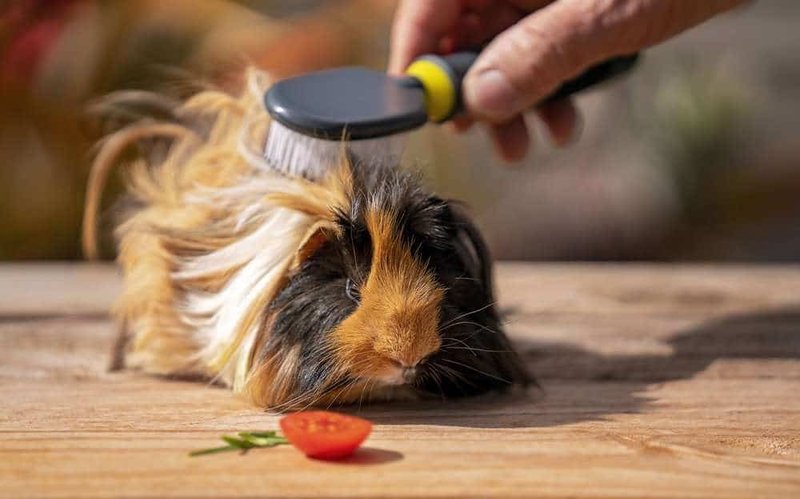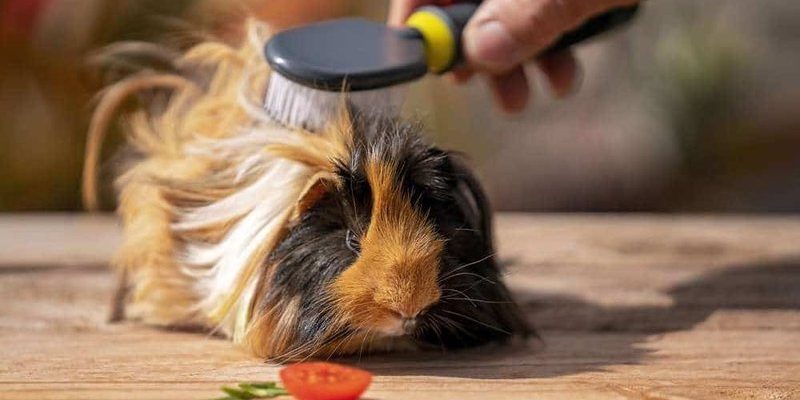
Just like you wouldn’t neglect an exquisite plant or a fine instrument, giving your Skinny Pig the right grooming routine is key. After all, they’re not just pets; they’re part of the family! So, let’s dive into some essential grooming tips and maintenance practices that will ensure your Skinny Pig thrives.
Understanding the Skin and Coat of Skinny Pigs
The first thing to know about Skinny Pigs is that they’re hairless, which means they don’t have a furry coat to groom like other guinea pigs. This unique trait makes their skin much more exposed and susceptible to various issues, like dryness and irritation. Because of this, maintaining their skin health is crucial.
Skinny Pigs have very sensitive skin. It’s smooth but can also be prone to sunburn and skin infections, so it’s important to handle them gently. Just like you’d use special care when taking care of delicate fabric, think of your Skinny Pig’s skin in the same way. Regular checks for any blemishes or unusual spots can prevent potential problems down the line.
Another thing you should know is that even though they don’t have fur, they still require grooming. You might be wondering how to go about caring for their unique skin. Regular bathing and moisturizing can help keep their skin in top shape and prevent dryness, which can lead to discomfort.
Bathing Your Skinny Pig
Bathing your Skinny Pig is an essential part of their grooming routine. But here’s the thing: you don’t want to overdo it. A bath every 3-4 weeks is usually sufficient. When you do bathe them, use a gentle, hypoallergenic shampoo made specifically for guinea pigs or small animals. Human shampoos can be too harsh and strip the natural oils from their skin.
When you’re ready to bath your Skinny Pig, gather your supplies. You’ll need:
- A small basin or sink
- Warm water (not hot!)
- Hypoallergenic shampoo
- A soft towel
Fill the basin with a few inches of warm water and gently place your Skinny Pig in it, supporting their body. Use a cup to pour water over their skin and lather up some shampoo. Rinse thoroughly, ensuring no soap is left behind. Afterward, gently wrap them in a towel to dry off, as they don’t have fur to soak up the moisture.
Moisturizing Your Skinny Pig’s Skin
Once your Skinny Pig is clean, moisturizing their skin is vital. You might be thinking, “But why does their skin need moisturizer?” The answer is that without fur, their skin doesn’t have the protective barrier it usually would. Regular use of a pet-safe moisturizer can help keep it hydrated and healthy.
Look for moisturizers specifically designed for guinea pigs or small animals. Avoid oils or creams intended for humans, as these can contain ingredients that may irritate your pet’s skin. Apply a small amount of moisturizer, like a pea-sized drop, to your hands and gently rub it over their skin, focusing on any particularly dry areas.
Be cautious not to apply too much, as it could make them feel greasy. You’ll find that just a little goes a long way. Giving your Skinny Pig this extra care will not only keep their skin looking great but also help them feel comfortable and loved.
Nail Care for Skinny Pigs
Just because Skinny Pigs don’t have fur doesn’t mean they don’t need regular nail care. In fact, keeping their nails trimmed is essential for their overall health. Long nails can cause discomfort or even lead to injury. You might notice that their nails grow quite quickly, so plan to check them every couple of weeks.
To trim their nails, you’ll need a pair of small animal nail clippers or regular nail clippers. Here’s how to do it:
1. Get your Skinny Pig comfortable: Hold them gently in your lap or on a soft surface.
2. Expose the nail: Lightly press on their paw to extend their nails.
3. Look for the quick: This is the pink part of the nail that’s sensitive. You want to trim just the sharp tip, avoiding the quick.
4. Trim carefully: Cut small amounts, taking extra caution to avoid cutting into the quick.
If you’re unsure, take it slow and trim a little at a time. You can always consult your vet for a quick demo on nail trimming if you’re feeling nervous about it.
Regular Skin Checks
Inspecting your Skinny Pig’s skin regularly is key to their well-being. You might be wondering what specific things to look out for during these checks. Pay attention to any bumps, redness, or unusual textures. Changes in the skin could indicate infections or other health issues, so it’s best to catch anything early.
When checking, start by holding your Skinny Pig comfortably and gently running your fingers over their body. Look for:
- Red or inflamed areas
- Any unusual bumps or lumps
- Dry patches or flakes
- Signs of irritation, like excessive scratching
If you notice anything concerning, don’t hesitate to contact your veterinarian. They can provide guidance and treatment options to keep your furry friend healthy.
Creating a Cozy Environment
A significant part of maintaining your Skinny Pig’s overall well-being lies in their environment. Creating a warm, snug space is essential because these little guys can’t regulate their body temperature like furry guinea pigs.
Set up their cage with a soft, warm bedding material that won’t irritate their skin. You can use materials like carefresh or aspen shavings, but avoid cedar or pine, as these can be harmful. Provide plenty of hiding spots using soft fabrics or tunnels, so they can feel secure.
Also, keep the temperature stable—it should be warm but not hot. Skinny Pigs thrive best in a climate-controlled area, away from drafts or direct sunlight. Regular cleaning of their cage is crucial too. Dirty bedding can lead to skin irritations and infections, so make it a habit to spot clean daily and do a thorough cleaning weekly.
Regular Vet Check-ups
Lastly, don’t underestimate the importance of regular visits to the vet. Just like with any other pet, routine check-ups can help catch potential health issues before they become serious. Your vet can provide valuable advice on grooming and skin care tailored to your Skinny Pig’s needs.
During your visits, schedule a professional nail trim if you’re not comfortable doing it yourself. The vet can also help you set a grooming schedule that fits your Skinny Pig’s lifestyle and unique characteristics.
It’s also a chance to have an open conversation about diet and general care, including how to best support your pet’s skin health. Your vet is your partner in keeping your Skinny Pig happy, healthy, and well-groomed.
In conclusion, caring for a Skinny Pig is a rewarding experience that requires a bit of extra attention to grooming and maintenance. By following these tips, you can ensure your pet enjoys a comfortable, healthy life. Whether it’s regular baths, moisturizing, or creating a cozy habitat, every little effort counts in showing them the love they deserve!

